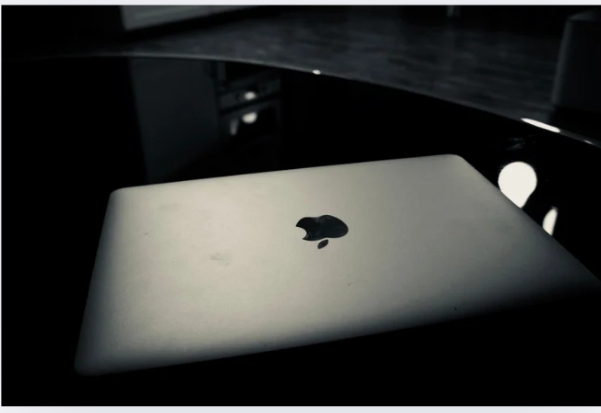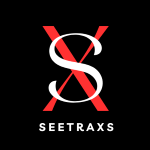
Explained Which Darktable Do I Download for M1 macOS Sequoia
When it comes to photo editing on your M1 macOS Sequoia, Darktable is a top choice for many photographers. However, with the variety of versions available, figuring out which one to Darktable download for your M1 macOS Sequoia Mac can be confusing. In this article, we’ll walk through everything you need to know about downloading and installing the best version of Darktable for macOS Sequoia, ensuring that you get the most optimized and efficient experience.
Introduction: Understanding Darktable for M1 Macs
What is Darktable?
Darktable download M1 macOS Sequoia is an open-source photography workflow application designed for managing and editing digital images, especially RAW files. Think of it as a free alternative to Lightroom, with powerful tools for color correction, retouching, and organizing your photo collection. It’s loved by both amateur and professional photographers for its versatility and feature set.
Why M1 macOS Sequoia Matters
With the introduction of Apple’s M1 chips in their Macs, including the macOS Sequoia version, the performance capabilities have drastically improved. These chips bring faster processing, better energy efficiency, and the potential for software optimization specifically designed for them. However, when running resource-heavy applications like Darktable, you need to ensure you’re using the right version tailored to take advantage of these powerful features.
Choosing the Right Darktable Version for M1 Macs
Darktable and macOS Compatibility
Before you dive into the download process, it’s crucial to understand how Darktable interacts with macOS. The application has been updated over the years to provide better performance on newer macOS versions. For M1 Macs, you’ll want to ensure you’re using a version that fully supports ARM-based chips, as the M1 chip architecture differs from Intel-based processors.
Native M1 Support: What Does It Mean?
Native support for M1 chips means that Darktable has been optimized to run efficiently on ARM-based processors, taking full advantage of the M1’s architecture. This support is crucial because running a non-optimized version of the software may result in slower performance or compatibility issues. So, when you’re downloading Darktable for your M1 macOS Sequoia, make sure you go for a version that offers native M1 support.
The Best Version of Darktable for M1 Macs
For optimal performance on your M1 Mac, you’ll want to download the latest stable release of Darktable that includes native support for ARM chips. This version is specifically tailored for the M1 architecture and ensures the software runs smoothly without performance bottlenecks. Make sure to always check the official Darktable website or trusted sources for the latest version designed for M1 Macs.
Downloading Darktable for M1 Macs
Official Sources for Downloading Darktable
To ensure you’re downloading a safe and up-to-date version of Darktable, always visit the official website: darktable.org. Here, you can find both stable releases and the latest development versions.
Avoiding Third-Party Sources: Why It’s Crucial
While third-party websites may offer Darktable downloads, it’s best to avoid them. Downloading from unofficial sources can expose your system to potential security risks or outdated software versions. Stick to official repositories or trusted app stores like the Mac App Store to ensure you’re getting the latest and most secure release.
Installing Darktable on Your M1 macOS Sequoia
Step-by-Step Guide to Installation
Installing Darktable on your M1 Mac is relatively simple. Follow these steps:
Download the Darktable Installer: Go to the official Darktable website, find the latest version for macOS, and click on the download link.
Open the Installer: Once downloaded, locate the installer file and double-click it to begin the installation process.
Follow the setup instructions: The installer will walk you through each required step. Ensure that you’re following all on-screen instructions carefully.
Complete Installation: Once the process finishes, you can launch Darktable from your Applications folder.
Preparing Your System
Before installing, it’s always a good idea to ensure your macOS Sequoia is up-to-date. This helps prevent compatibility issues. Make sure you have the latest security updates installed and that there’s sufficient storage space on your Mac.
Running the Installer
When you run the installer, it should automatically detect your system configuration and install the appropriate version of Darktable. If you encounter issues, ensure that you’re not trying to install an outdated version.
Troubleshooting Common Installation Issues
Sometimes, even with the correct version, you may run into issues during installation. Here are some tips to help:
Permission Issues: If you see a prompt about permissions, simply adjust the security settings in your macOS preferences.
Not Enough Storage: Ensure your system has enough available disk space for Darktable and any additional image files you plan to work with.
Version Incompatibility: If you are using an older version of macOS, you might need to download a legacy version of Darktable.
Darktable Performance on M1 Macs
How Does Darktable Run on M1 Macs?
Darktable’s performance on M1 Macs is generally excellent, thanks to the ARM architecture. You’ll notice faster image processing, quicker load times, and smoother handling of RAW files. In fact, the M1 chip’s integrated GPU can significantly improve tasks like batch processing and editing large files.
Optimizations for M1 Chips
The M1 chip brings optimizations that Darktable can fully leverage. For example, image processing algorithms are faster, and you may experience fewer lags when working with high-resolution files. Darktable for M1 Macs has been tuned to ensure you get the most out of your system’s capabilities.
Performance Boosts and How to Maximize Them
To maximize Darktable’s performance on M1 Macs, you can tweak a few settings:
Enable GPU Acceleration: In the preferences menu, enable GPU acceleration to speed up processing.
Adjust Cache Settings: By increasing cache size, you can speed up image loading times.
Update Regularly: Always check for software updates that include performance improvements.
Conclusion
When deciding which version of Darktable to download for your M1 macOS Sequoia, always opt for the latest stable release that supports ARM-based chips. This ensures you get the most optimized performance and seamless editing experience. Whether you’re a beginner or a pro, Darktable is an excellent choice for photographers using M1 Macs, offering powerful editing features at no cost.
FAQs
1. Is Darktable free to use?
Yes, Darktable is an open-source software, which means it’s completely free to download and use.
2. Can I use Darktable on older macOS versions?
Darktable can work on older macOS versions, but for the best experience, especially on M1 Macs, it’s recommended to use the latest version.
3. How do I update Darktable on my Mac?
You can update Darktable by visiting the official website and downloading the latest version. If you installed it via a package manager, updates will be handled automatically.
4. Does Darktable support RAW image editing on M1 Macs?
Yes, Darktable fully supports RAW image editing on M1 Macs, providing high-quality editing tools for professional photographers.
5. Is Darktable compatible with other photo editing software?
Yes, Darktable supports integration with other tools like GIMP and can handle files from various photo editing programs.



